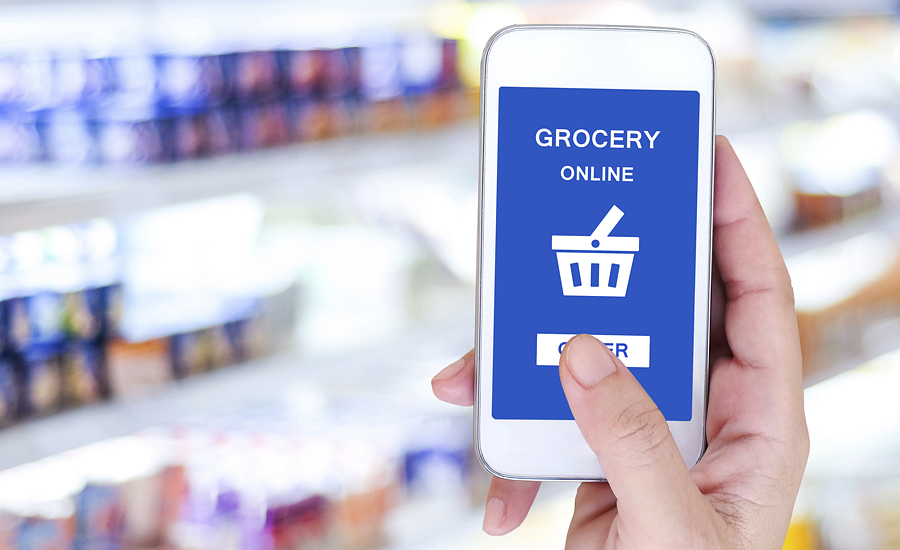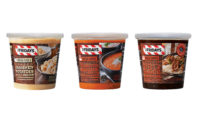Poll: Consumers slow to migrate to online grocery shopping
About one-third of Americans (32%) shop for groceries in person more than once a week, about half (49%) shop once a week and 18% go less often than that.

Despite a profusion of online services that offer Americans an alternative to spending time in the grocery store, 84% of U.S. adults report they never order groceries online and 89% never order meal preparation kits, according a poll conducted by Gallup, Washington, D.C.
According to Gallup's July 1-11 Consumption Habits poll, about one-third of Americans (32%) shop for groceries in person more than once a week, about half (49%) shop once a week and 18% go less often than that. Just 1% say they never go.
In contrast to the 81% who grocery shop in person at least weekly, only 4% of U.S. adults order groceries online this often, while another 11% say they do it less frequently. Similarly, just 1% order meal preparation kits weekly and 9% order them less often.
Aside from purchasing their own food, presumably to make at home, 45% of adults report eating out at a restaurant at least weekly and 31% order takeout food.
These findings represent the first time Gallup has measured Americans' reliance on meal prep kits, takeout food and dining out in this format.
Upper-income Americans grocery shop and dine out more
Virtually all Americans report visiting grocery stores to some degree, but higher-income consumers go more frequently. For instance, 90% of those in households earning $75,000 or more per year shop for groceries in stores at least weekly vs. 84% of those earning between $30,000 and $74,999 and 63% of those earning less than $30,000. There is little difference in store visits by gender, age or even whether an adult has children in the household.
Restaurant dining is also strongly related to income, with the percentage eating out weekly or more dropping from 63% of those earning $75,000 and above to 41% of those in the middle-income bracket and 21% of those in the lowest income bracket. Again, age and gender are not big factors in this, but employment status is, as 52% of those working full- or part-time vs. 36% of those not employed say they eat out at least once a week.
Parents at the vanguard of ordering groceries online
The greatest demographic distinctions for the other food purchase methods measured are evident when focusing on the percentages of Americans who use each at least monthly. Most notably:
- Adults with a child under 18 in the household are twice as likely as those without a child to say they order groceries online at least monthly, 14% vs. 7%.
- Parents are also more likely than others to order takeout meals, 77% vs. 66%.
- More broadly, ordering takeout is more common among younger and middle-aged adults. 79% of those aged 18-34 and 80% of those aged 35-54 say they order takeout at least monthly vs. 53% among those 55 and older.
- Ordering groceries online is more common among upper-income Americans. 12% of those earning $75,000 or more vs. 7% in the lower income categories.
- There are no significant differences in the low percentages of people who use meal preparation kits by gender, age, employment, income or family status.
Bottom line
When it comes to purchasing food, Americans overall remain traditionalists, relying mostly on grocery shopping rather than services that bring food to them. Meal delivery services that cut out the trip to the grocery store appeal mainly to those short on time -- parents with children younger than age 18 and employed adults. Higher-income Americans are also bigger adopters of grocery delivery, either because higher income means they can afford more groceries or because they have greater access to mobile technology like smart phones and tablets that make ordering online easier. More generally, Americans may just not like to think that far in advance when it comes to what to eat.
Survey methods
Results for this Gallup poll are based on telephone interviews conducted July 1-11, with a random sample of 1,033 adults, aged 18 and older, living in all 50 U.S. states and the District of Columbia. For results based on the total sample of national adults, the margin of sampling error is ±4 percentage points at the 95% confidence level. All reported margins of sampling error include computed design effects for weighting.
Looking for a reprint of this article?
From high-res PDFs to custom plaques, order your copy today!




